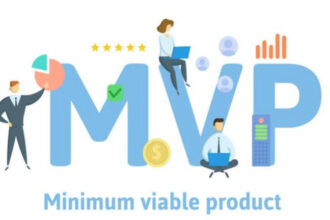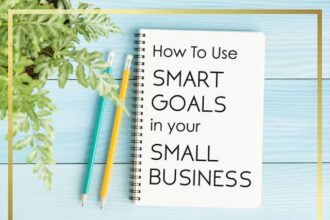Every groundbreaking business begins with a powerful idea – a solution to a problem, a novel service, or a product destined to change lives with a mixed budget for capital.
That initial spark of inspiration is exciting! But then, reality often hits: the daunting prospect of development costs, securing substantial budget and the underlying fear of pouring thousands of hard-earned naira into something that might not even work. It’s enough to make even the boldest dream feel out of reach.
But what if you could test your big idea, get real customer feedback, and even start generating revenue without draining your bank account?
This is where the magic of building an MVP on a budget comes in.
The Minimum Viable Product isn’t just a tech term; it’s a strategic lifeline for entrepreneurs, especially those of us looking to make a real impact without endless capital or a big budget.
Ready to launch smart, validate your vision, and transform your idea into reality without the massive financial strain? Let’s dive into your ultimate guide to building an MVP on a budget!
Understanding the Minimum Viable Product (MVP) base on your budget.
An MVP (Minimum Viable Product) is simply the most basic version of your product or service that you can release to a small group of early customers. Its main goal isn’t to be perfect or packed with every imaginable feature. Instead, its purpose is to:
- Test Your Core Idea: Does your solution actually fix a real problem for real people?
- Learn from Users: Gather feedback and observe how people truly use your product.
- Keep Costs Low: Spend less time and money upfront on something that might not catch on.
- Get to Market Faster: Launch quickly, learn quickly, and make improvements quickly.
It’s important to remember: an MVP is not a half-finished, buggy mess. It’s a carefully planned, stripped-down version that delivers core value, robust enough to prove (or disprove) your main business idea and set the stage for what comes next.
The Lean Mindset: Your Foundation for an MVP on a Budget
The idea behind an MVP comes from the Lean Startup approach budget, which is all about being efficient and constantly learning. It follows a simple loop:
- Build: Create your MVP with only the essential features to test your main hypothesis.
- Measure: Collect information about how users are actually interacting with it.
- Learn: Look at that information to understand what’s working, what isn’t, and what needs to change. This learning then feeds back into the next “Build” phase.
This way of working is super important for building an MVP on a budget because it stops you from spending too much money on features that customers might not even want.
Core Principles for Building an MVP on a Budget: Practical Strategies
Here’s how you can keep your expenses low while getting the most valuable insights from your early users:
1. Focus on Ruthless Prioritization: The “Must-Haves” ONLY
This is often the trickiest but most crucial step. Your MVP should tackle one main problem for one specific type of user.
- Strategy: List every single feature you can dream up for your product. Then, ask yourself: “Which single feature has to be there for my product to actually exist and solve its main problem?” Everything else can wait for later versions. For instance, if your grand idea is a smart home system, your MVP might just be a smart light switch, proving that the core connection and control work.
2. Accelerate Development with No-Code/Low-Code Tools
You don’t need to be a coding genius or hire a huge team to build your MVP anymore.
- No-Code Platforms: Tools like Bubble, Adalo, Webflow, Glide, or Softr let you build functional websites or mobile apps using simple drag-and-drop actions.
- Low-Code Platforms: These give you a bit more flexibility than no-code but still simplify the development process.
- Website Builders: If your MVP is a service or needs to gather leads, a professional-looking website built with WordPress (using tools like Elementor or Divi), Squarespace, or Wix might be all you need to showcase your offer and collect interest.
- Action: Research which platform best fits your MVP’s main feature. Many offer free trials or affordable monthly plans.
3. Delegate Strategically and Smartly
If a specific feature absolutely requires coding or expert design, think about hiring a freelancer for just that task instead of a full-time employee.
- Strategy: Look for talent on platforms like Upwork, Fiverr, or local Nigerian talent communities. Be very clear about what you need them to do and the deadline.
4. Simplify with Manual Processes (Initially)
You don’t need everything to be automated in your MVP. Doing some things manually behind the scenes can help you launch faster and cheaper.
- Strategy: For example, if you’re building a delivery service MVP, you might manually process initial orders, send personalized confirmation emails, or even make the first few deliveries yourself. Think about how Zappos started: the founder literally went to local shoe stores, took photos of shoes, and only bought them when a customer ordered online. This helped prove people would buy shoes online before he invested in a massive inventory.
5. Listen and Gather Feedback Relentlessly
The real success of your MVP depends on what you learn from actual users.
- Strategy: Actively ask for feedback through surveys, direct conversations, user testing, and website analytics. Observe closely how people use your MVP. Don’t just ask what they want; try to understand why they do what they do. This learning is incredibly valuable for deciding what to build next.
Real-World Inspiration: MVPs That Became Global Successes
Many of today’s biggest companies started with surprisingly simple MVPs:
- Airbnb: Their very first MVP was a basic website to rent out air mattresses in their own apartment during a conference. They manually took photos of their listings to make them look more appealing. They just wanted to see if people would actually pay to stay in someone else’s spare room.
- Dropbox: Instead of building complex software right away, they made a simple video showing how their file-syncing service would work. Then, they opened a waiting list, proving there was huge demand before writing much code.
- Zappos: As mentioned, the founder started by taking photos of shoes from local stores, listing them online, and only buying the shoes once a customer ordered. This proved that selling shoes online was a viable idea before he invested in huge warehouses.
These examples show that a strong idea, combined with a lean and smart approach, can overcome limited budgets.






